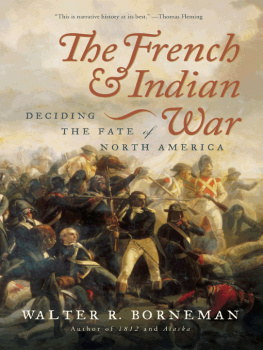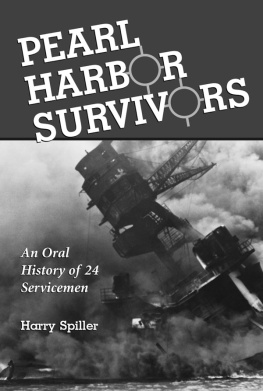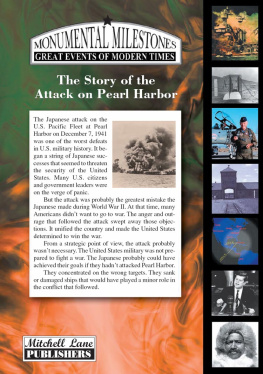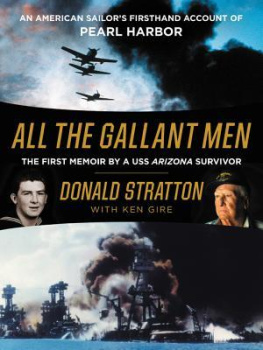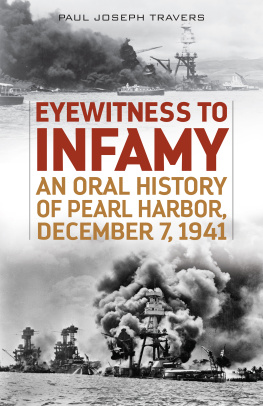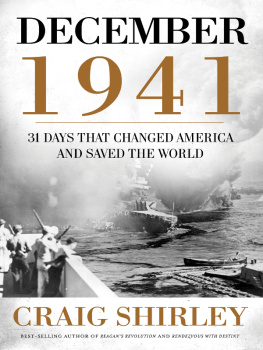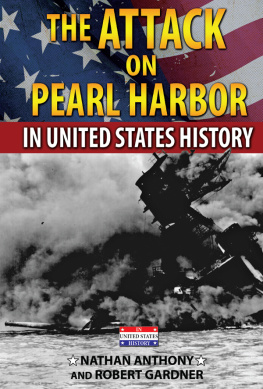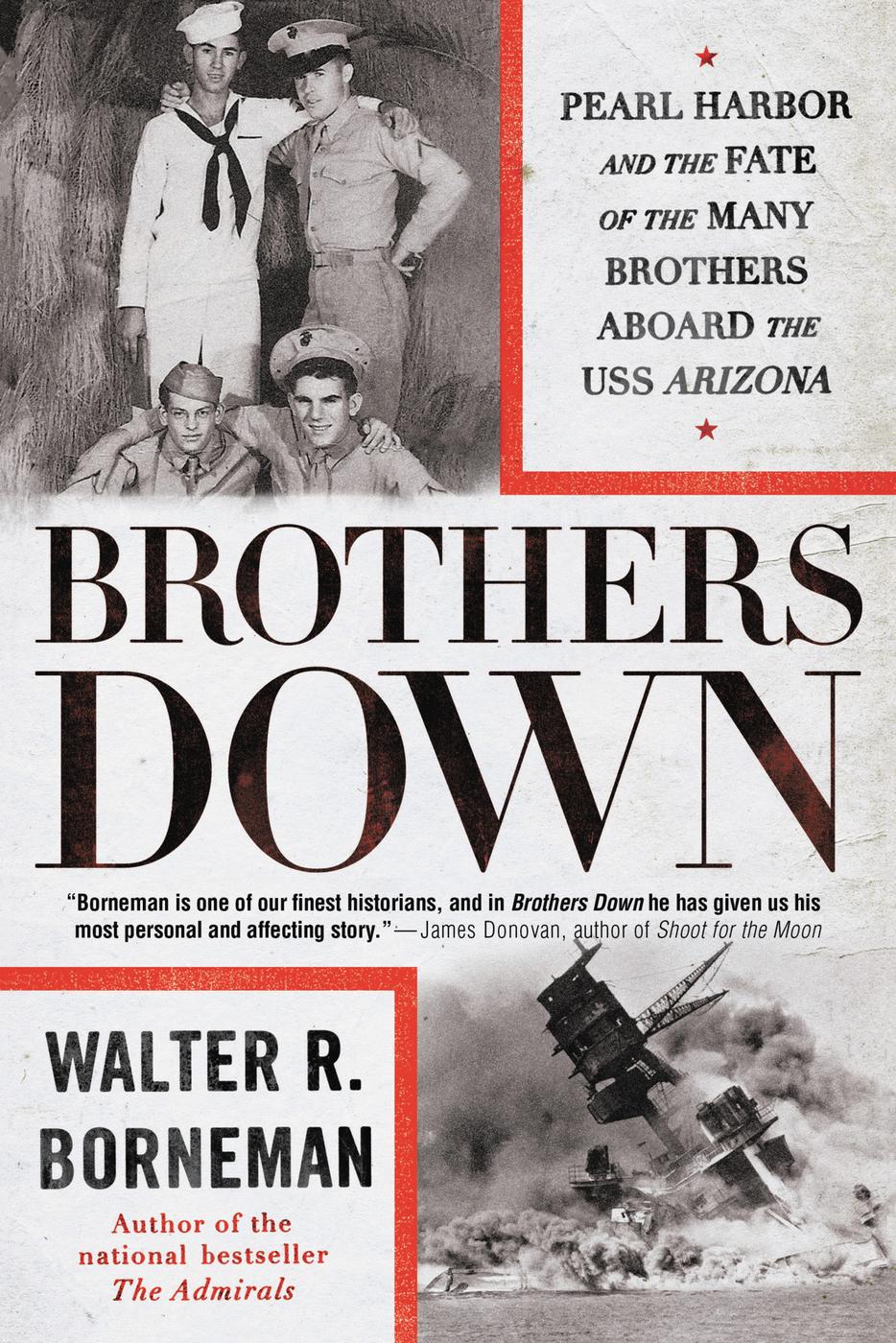
Copyright 2019 by Walter R. Borneman
Hachette Book Group supports the right to free expression and the value of copyright. The purpose of copyright is to encourage writers and artists to produce the creative works that enrich our culture.
The scanning, uploading, and distribution of this book without permission is a theft of the authors intellectual property. If you would like permission to use material from the book (other than for review purposes), please contact permissions@hbgusa.com. Thank you for your support of the authors rights.
Little, Brown and Company
Hachette Book Group
1290 Avenue of the Americas, New York, NY 10104
littlebrown.com
facebook.com/littlebrownandcompany
twitter.com/littlebrown
First Edition: May 2019
Little, Brown and Company is a division of Hachette Book Group, Inc. The Little, Brown name and logo are trademarks of Hachette Book Group, Inc.
The publisher is not responsible for websites (or their content) that are not owned by the publisher.
The Hachette Speakers Bureau provides a wide range of authors for speaking events. To find out more, go to hachettespeakersbureau.com or call (866) 376-6591.
Maps by David Lambert
ISBN 978-0-316-43887-2
E3-20201020-DA-NF-ORI
Explore book giveaways, sneak peeks, deals, and more.
Tap here to learn more.

For Those Who ServedBrothers All
The Pacific, 1941, Including Japanese
Advances into Southeast Asia
Oahu Military Installations, December 1941,
Inset of Ford Island and Fleet Landings

On the USS Arizona
Anderson twins John Delmar Andy and Delbert Jake from Minnesota
Andy survived and searched in vain for Jake
Ball brothers Masten and William Bill from Iowa
Masten survived; Bill died
Becker trio of brothers from Kansas
Harvey survived; Marvin and Wesley died;
younger brother Bob later enlisted in Navy and survived
Chandler brothers Edwin Ray, US Navy, and Donald, USMC, from Alabama
Ray survived; Donald died
Christiansen brothers Edward Sonny and Carl Buddy from Kansas
Sonny died; Buddy survived
Czarnecki brothers Anthony and Stanley from Michigan
Anthony survived; Stanley died;
younger brother Henry later enlisted in Army and died
Free father and son, Thomas Augusta Gussie and William Thomas from Texas
Both died
Giovenazzo brothers Joseph on Vestal and Mike on Arizona from Illinois
Joe survived; Mike died
Heidt brothers Edward Joseph Bud and Wesley John from California
Both died
Miller brothers George Stanley and Jesse Zimmer from Ohio
Both died
Morse brothers Francis Jerome and Norman Roi from Colorado
Both died
Murdock trio of brothers from Alabama
Thomas survived, Charles Luther and Melvin died;
younger brothers Verlon, then in Navy in Los Angeles, and Kenneth, who later enlisted, survived
Shive brothers Gordon, USMC, and Malcolm, US Navy, from California
Both died
Warriner brothers Kenneth Thomas and Russell Walter from Wisconsin
Both survived
Rear Admiral Isaac Kidd from Ohio
Died on the flag bridge
Commander, Battleship Division One; awarded Medal of Honor
Captain Franklin Van Valkenburgh from Wisconsin
Died on the bridge
Captain of the ship; awarded Medal of Honor
Lieutenant Commander Samuel G. Fuqua from Missouri
Survived
Damage Control Officer; awarded Medal of Honor
Major Alan Shapley, USMC, from New York
Survived
Outgoing commander, ships Marine Detachment
Private, First Class, Russell Durio, USMC, from Louisiana
Died
Musicians of the ships band
All died at their battle stations as ammunition handlers
Officers and enlisted men of the Arizona
At Pearl Harbor
Admiral Husband E. Kimmel, commander in chief, US Pacific Fleet
Lieutenant General Walter C. Short, commander, US Army forces in Hawaii
Lieutenant Commander William W. Outerbridge, captain of destroyer Ward
Joseph C. Harsch, Christian Science Monitor foreign correspondent
Wives and sweethearts of men on the Arizona
In Washington, DC
Franklin D. Roosevelt, President of the United States
Cordell Hull, Secretary of State
Henry L. Stimson, Secretary of War
Frank Knox, Secretary of the Navy
Harry Hopkins, presidential advisor
Admiral Harold R. Stark, Chief of Naval Operations
General George C. Marshall, Chief of Staff, US Army
Around the country
Parents, wives, and sweethearts of men on the Arizona
M ANY OF MY books have focused on big-picture topics: major wars, an expansionist president, a controversial general, and the four men to hold the five-star rank of fleet admiral in the United States Navy. Behind those men and events, however, there were always the rank and file upon whose shoulders fell the implementation of broader strategies and goals. Frequently, their personal goals were to live to see another sunrise.
This was perhaps never truer than in the early months of World War II, when the horrors of war abruptly cascaded upon eighteen-, nineteen-, and twenty-something-year-old boys who had recently joined the United States Navy and Marines. Many suddenly found themselves on the front lines not out of any great surge of patriotic pridealthough there was some of thator out of a personal quest to see the worlda few were indeed roversbut rather out of economic necessity.
Most came from the poverty of the Great Depression. Many were rural farm boys from large families whose absence around the family table meant one less mouth to feed. The five or ten dollars that many sent home monthly out of their pay of thirty-six dollars helped to feed younger siblings. In short, they desperately needed the money and joined up for a steady income.
Standing on the memorial above the sunken battleship Arizona at Pearl Harbor while writing The Admirals, I had only a vague awareness that thirty-eight sets of brothers served aboard the ship on December 7, 1941. Whenever I mentioned that to others, I was met with almost universal disbelief but also a certain measure of fascination. Thirty-eight sets of brothers? Eighty or so men? How could that be?
The Pearl Harbor story has never been told through the eyes of the many brothers serving together aboard the Arizona that fateful day. The bigger story is inexorably wrapped around those of the individual men who fought there, but it is never more poignant than the family stories of these brothers. Among the 2,403 American servicemen who died on December 7, 1941, 1,177 were crew members of the Arizona. In an era when family members serving together was an accepted, even encouraged practice, sixty-three of the Arizonas dead were brothers, a staggering 80 percent casualty rate among those brothers assigned to the ship.
In gathering their stories, there were some surprises: I simply was not prepared for the outpouring of information and support that came from the families of those brothers who served together on the Arizona. As they shared with me treasured letters, faded photographs, and family reminiscences, two things struck me most deeply: their willingness to recount what in many instances were very private personal stories, and the continuing sorrow these family members feelat least a generation or sometimes two or three generations removed from that day.


